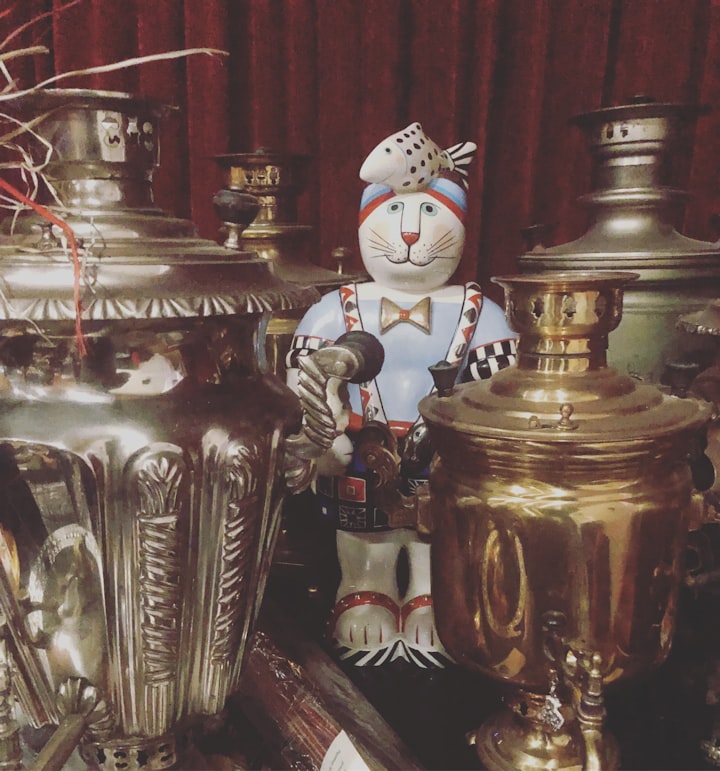About Samovar and Russian Tea
Have you ever drank Russian tea?
"Nowhere in the world do people drink tea as we do in Russia," said Olga Yurkina, organizer of the exhibition "About Samovars and Other Things," Moscow, 2014. "In China and Japan, tea is the centerpiece of the ceremony. ). In Russia, however, tea is a pretext for a long conversation, "added Burkina.
Russian tea Tea has been drunk in Russia since the 17th century, but the drink has become popular with all social classes since the 19th century. The Russians love tea and consume it in considerable quantities.
According to a 2005 study, 82% of Russians drink tea daily. Another KMPG study reports that a Russian drinks an average of 3.5 cups of tea a day. In Russia, tea is as popular as vodka and seems to be a social activity, a pretext for socializing, more than just a drink.
How the Tea Arrived in Russia
Tea officially arrived in Russia in 1618 when Tsar Alexei received several tea boxes as gifts from the Chinese ambassadors.
By 1689, caravans of 300 camels were already being organized, traveling 11,000 miles from Russia to China and back in 16 months.
The route carried caravans through Mongolia and the Gobi Desert, each camel carrying 600 pounds of tea. During the trip, the tea in canvas bags was impregnated with the smell of campfires and thus was born the famous Russian tea that is still sold today: Russian Caravan.
At the same time, because porcelain teapots were impossible to transport on a long journey, the metal samovar has become a practical and popular way in Russia and today to prepare hot water for tea infusion.
How the Russians Drink Tea
Russians prefer important black tea from China and India (90% of tea imported into Russia is black tea). But there is also a widespread habit of mixing dried herbs with black tea or green tea (mixed infusions).
The Russians usually make a concentrated infusion called "заварка" (zavarka). "3avarka" is poured into teacups, over which is added hot water from the samovar, as desired. Before serving the infusion, the Russians crush a sugar cube between their teeth or prefer to enjoy a teaspoon of jam. Or I can add sugar, lemon, or sometimes milk to a cup of tea.
Traditionally, tea is served in the afternoon, but in reality, in Russia, tea is served throughout the day, usually after dinner, with dessert.
"It is necessary to have pies, candies, and various delicacies on the table while enjoying tea," said Olga Yurkina, organizer of the exhibition "About the Samovar and Other Things," Moscow, 2014.
Samovar - The Symbol of Russian Hospitality
samovar Russia Although today everyone associates samovar with Russian tea, it is not known exactly where it was invented.
There are several stories about the origins of the samovar. Some say it was brought to Russia by Tsar Peter the Great from the Netherlands, and then Russian craftsmen began making it. Other sources suggest that the samovar was brought from China.
But what is certain and historically verified is the fact that samovars were produced at factories in Demidov, in the Ural Mountains in 1740.
The name of one of the first Russian industrialists, Nikita Demidov, is associated with the production of samovars in Russian factories. He brought craftsmen from the city of Tula to make them and thus the famous Tula samovars, famous all over Russia, were born.
There were 2 types of samovars: a mobile one for a single cup of water and a static one with a capacity of up to 10 liters of water.
"Samovars were not cheap and in the 19th century, the average cost of a samovar was 10 rubles in gold, the salary for a month. However, people bought samovars because once they bought one, they had it for life.
Many times they were part of the objects left as a legacy to the descendants, "said Olga Yurkina, organizer of the exhibition" About the samovar and other things ", Moscow, 2014.
In 1826 there were already 8 samovar factories, in 1896 there were 70. They were made of copper, brass, in some cases silver. Sometimes they were plated with gold, but the base metal was always brass (copper and zinc alloy).
Where Tea Is Grown in Russia
Tea was first grown in 1833 in the Crimea, in the Nikitsky Botanical Gardens.
However, the industry did not develop until around World War II. Today, the main tea-growing area in the southwestern province of Krasnodar.
Before the dissolution of the USSR, tea production reached 3,858–4,409 tons, from two factories. However, since the 1990s, the industry has not prospered and today Russia produces only 1% of the amount of tea it consumes.






Comments
There are no comments for this story
Be the first to respond and start the conversation.